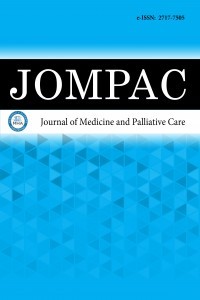1.
Dias V. Candida species in the urinary tract: Is it a fungalinfection or not? Future Microbiol. 2020;15(2):81-83. doi:10.2217/fmb-2019-0262
2.
Yadav RK, Singh G, Kiran KS, et al. A study on candiduria inneonates and infants from a tertiary care center, North India.Indian J Med Microbiol. 2023;42(June 2022):25-29. doi:10.1016/j.ijmmb.2022.12.014
3.
Gharaghani M, Taghipour S, Halvaeezadeh M, MahmoudabadiAZ. Candiduria; a review article with specific data from Iran.Turkish J Urol. 2018;44(6):445-452. doi:10.5152/tud.2018.54069
4.
Malhotra S. Occurrence of Candiduria in Paediatric Patients andits Antifungal Susceptibility in a Tertiary Care Centre. J Infect DisMed. 2017;2(1):2-5.
5.
He Z, Su C, Bi Y, Cheng Y, Lei D, Wang F. Evaluation of a novellaboratory candiduria screening protocol in the intensive careunit. Infect Drug Resist. 2021;14:489-496. doi:10.2147/IDR.S289885
6.
Odabasi Z, Mert A. Candida urinary tract infections in adults.World J Urol. 2020;38(11):2699-2707. doi:10.1007/s00345-019-02991-5
7.
Behzadi P, Behzadi E, Ranjbar R. Urinary tract infectionsand Candida albicans. Cent Eur J Urol. 2015;68(1):96-101.doi:10.5173/ceju.2015.01.474
8.
He Z, Huo X, Lei D, Zhao H, Jia K, Wang F. Management ofcandiduria in hospitalized patients: a single-center study on theimplementation of IDSA guidelines and factors affecting clinicaldecisions. Eur J Clin Microbiol Infect Dis. 2021;40(1):59-65.doi:10.1007/s10096-020-03999-1
9.
Tan X, Baugh K, Bulman ZP, Wenzler E. Review of the currentmanagement of urinary tract infections due to fluconazole-resistant and non-albicans Candida species. Curr Fungal InfectRep. 2020;14(3):268-278. doi:10.1007/s12281-020-00388-1
10.
Kobayashi CCBA, De Fátima Lisboa Fernandes O, MirandaKC, De Sousa ED, Do Rosário Rodrigues Silva M. Candiduriain hospital patients: A study prospective. Mycopathologia.2004;158(1):49-52. doi:10.1023/B:MYCO.0000038436.51918.d9
11.
Chaari A, Munir A, Sharaf A, Khairy A, Kauts V, Erdem H.Predictive factors and prognostic value of candiduria in critically-ill patients with solid and hematological malignancies. J MedMycol. 2023;33(1):101353. doi:10.1016/j.mycmed.2022.101353
12.
Alfouzan WA, Dhar R. Candiduria: Evidence-based approach tomanagement, are we there yet? J Mycol Med. 2017;27(3):293-302.doi:10.1016/j.mycmed.2017.04.005
13.
Hollenbach E. To treat or not to treat - Critically ill patients withcandiduria. Mycoses. 2008;51(SUPPL.2):12-24. doi:10.1111/j.1439-0507.2008.01570.x
14.
Shirvani F, Fattahi M. Molecular identification of Candidaspecies isolated from candiduria and its risk factors in neonatesand children. Curr Med Mycol. 2021;17(3):9-12. doi:10.18502/CMM.7.3.7799
15.
Kauffman CA. Diagnosis and management of fungal urinarytract infection. Infect Dis Clin North Am. 2014;28(1):61-74.doi:10.1016/j.idc.2013.09.004
16.
Fisher JF, Kavanagh K, Sobel JD, Kauffman CA, Newman CA.Candida urinary tract infection: Pathogenesis. Clin Infect Dis.2011;52(SUPPL. 6):437-451. doi:10.1093/cid/cir110
17.
He Z, Liu Y, Wang T, Cheng Y, Chen J, Wang F. Candiduria inhospitalized patients: An investigation with the Sysmex UF-1000iurine analyzer. PeerJ. 2019;2019(5). doi:10.7717/peerj.6935
18.
Poloni JAT, Rotta LN. Urine sediment findings and the immuneresponse to pathologies in fungal urinary tract infectionscaused by Candida spp. J Fungi. 2020;6(4):1-12. doi:10.3390/jof6040245
19.
Francisco EC, de Almeida Junior JN, de Queiroz Telles F, etal. Species distribution and antifungal susceptibility of 358Trichosporon clinical isolates collected in 24 medical centres.Clin Microbiol Infect. 2019;25(7):909.e1-909.e5. doi:10.1016/j.cmi.2019.03.026
20.
Gajdács M, Dóczi I, Ábrók M, Lázár A, Burián K. Epidemiologyof candiduria and Candida urinary tract infections in inpatientsand outpatients: Results from a 10-year retrospective survey. CentEur J Urol. 2019;72(2):209-214. doi:10.5173/ceju.2019.1909
21.
Gharaghani M, Rezaei-Matehkolaei A, Hardani AK,Mahmoudabadi AZ. Genetic analysis of Candida glabrata fromcandiduric patients using microsatellite length polymorphism,antifungal susceptibility, and enzymatic profiles. Jundishapur JMicrobiol. 2021;14(1):1-8. doi:10.5812/jjm.113716
22.
Kauffman CA, Fisher JF, Sobel JD, Newman CA. Candida urinarytract infections - Diagnosis. Clin Infect Dis. 2011;52(SUPPL. 6).doi:10.1093/cid/cir111
23.
Fulton MA, Wallace B, Akins R, Teresa L. A Win for PatientSafety: Collaboration to Curb Catheter-Associated Urinary TractInfections (CAUTIs) due to Candida species. Am J Infect Control.2015;43(6):S47-S48. doi:10.1016/j.ajic.2015.04.120
24.
Rkieh L, El Nekidy WS, Alsoud LO, et al. Outcomes ofcaspofungin use in the treatment of Candida-related urinarytract infections, a case series. IDCases. 2022;28(May):e01510.doi:10.1016/j.idcr.2022.e01510
25.
Pramodhini S, Srirangaraj S, Easow JM. Candiduria—studyof virulence factors and its antifungal susceptibility pattern intertiary care hospital. J Lab Physicians. 2021;13(03):231-237.doi:10.1055/s-0041-1730880
26.
Demir C, Metin S. Microorganisms grown in urine culturesand antimicrobial resistance patterns: A randomisedretrospective analysis from a tertiary hospital. J Infect Dev Ctries.2023;17(3):337-344. doi:10.3855/jidc.17483
27.
García-Agudo L, Rodríguez-Iglesias M, Carranza-GonzálezR. Nosocomial Candiduria in the Elderly: MicrobiologicalDiagnosis. Mycopathologia. 2018;183(3):591-596. doi:10.1007/s11046-017-0232-7
28.
Toka Özer T, Durmaz S, Yula E. Antifungal susceptibilities ofCandida species isolated from urine culture. J Infect Chemother.2016;22(9):629-632. doi:10.1016/j.jiac.2016.06.012
29.
Paul N, Mathai E, Abraham OC, Michael JS, Mathai D. Factorsassociated with candiduria and related mortality. J Infect.2007;55(5):450-455. doi:10.1016/j.jinf.2007.06.010
30.
Singla N, Gulati N, Kaistha N, Chander J. Candida colonizationin urine samples of ICU patients: determination of etiology,antifungal susceptibility testing and evaluation of associatedrisk factors. Mycopathologia. 2012;174(2):149-155. doi:10.1007/s11046-011-9514-7
31.
Esmailzadeh A, Zarrinfar H, Fata AM, Sen T. High prevalence ofcandiduria due to non-albicans Candida species among diabeticpatients: A matter of concern? J Clin Lab Anal. 2018;32(4):1-5.doi:10.1002/jcla.22343
32.
McMorris TE, Smith WJ, Kupiec K, et al. Micafungin therapyfor symptomatic candiduria in hospitalized patients: A reviewof 14 cases. Infect Dis Clin Pract. 2017;25(2):88-93. doi:10.1097/IPC.0000000000000461
33.
Bukhary ZA. Candiduria: a review of clinical significance andmanagement. Saudi J Kidney Dis Transpl. 2008;19(3):350-360.
34.
Hosseini SS, Ghaemi E, Noroozi A, Niknejad F. Zinc oxidenanoparticles inhibition of initial adhesion and ALS1 and ALS3gene expression in Candida albicans strains from urinary tractinfections. Mycopathologia. 2019;0123456789. doi:10.1007/s11046-019-00327-w
35.
De Sousa IA, Braoios A, Santos TG, De Lima JA, Da Costa RM.Candiduria in adults and children: Prevalence and antifungalsusceptibility in outpatient of Jataí-GO. J Bras Patol e Med Lab.2014;50(4):259-264. doi:10.5935/1676-2444.20140024
36.
Ödemiş İ, İmre A. KatAter ilişkili üriner sistem enfeksiyonlarındamortalite ile ilişkili faktörlerin değerlendirilmesi, 5 yıllıkretrosepektif çalışma. Kahramanmaraş Sütçü İmam ÜniversitesiTıp Fakültesi Derg. 2022:0-3. doi:10.17517/ksutfd.1146548
37.
Korkmaz D, Demirtürk N, Keşli R, Konya P. Hospitalizekandidürili hastalarda risk faktörlerinin araştırılması. ActaMedica Alanya. 2019;3(1):72-77. doi:10.30565/medalanya.519111

